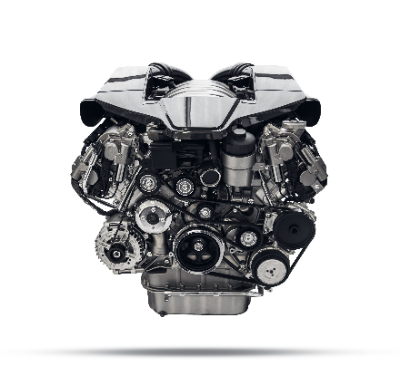What Is a Prime Mover?
 A prime mover is a device that converts electrical, thermal, or pressure energy into mechanical power.
A prime mover is a device that converts electrical, thermal, or pressure energy into mechanical power.
It generally refers to motors and engines, and is a generic term for mechanisms that convert electricity or fossil fuels into rotary or reciprocating motion as a power source. Engines are indispensable in industry and in our daily lives.
Uses of Engines
Engines are used for a variety of purposes. Some typical applications are listed below.
1. Industry
In the industrial field, prime movers play an important role in powering machinery and production equipment. For example, factory machines, conveyor belts, pumps, and compressors are driven by electric motors or internal combustion engines.
2. Transportation
Automobiles, ships, railroads, and other forms of transportation are driven by engines. Internal combustion engines and electric motors enable vehicles to run and increase the efficiency and speed of moving people and goods.
3. Everyday Life
Engines are used in many aspects of our daily lives. Electric motors are used in home appliances, such as refrigerators, air conditioners, washing machines, and vacuum cleaners. Also, tools such as drills, hammers, and lawn mowers can be made more efficient by a prime mover.
Principle of a Prime Mover
1. Energy Conversion
The principle of a prime mover is the conversion of energy (electricity, heat, pressure, etc.) into mechanical power. The principle of energy conversion is based on the law of conservation of energy. When energy is converted, there is no increase or loss of energy.
An engine converts externally given energy internally and outputs it as power. However, it is impossible to convert energy from electricity, fuel, etc., into power alone, and the energy that cannot be converted into power is released into the environment as heat or vibration. This is called loss, and reducing loss leads to saving fuel resources and directly improves the environment.
2. Conversion of Each Type of Energy Into Motive Power
When electrical energy is used, an electric motor (motor) is used. An electric motor converts electrical energy into magnetic energy and uses that magnetic energy to generate rotational motion.
When thermal energy is used, internal, or external combustion engines are used. Internal combustion engines directly convert thermal energy generated by fuel combustion into mechanical energy, while external combustion engines use gas or steam heated by a heat source to generate motive power.
When pressure energy is used, compressed air, or hydraulic pressure, is used as the power source. In a compressed air-based engine, compressed air is used by an air compressor to move a piston to produce mechanical power.
A hydraulic engine uses hydraulic pressure compressed by a pump to move a piston from which rotational motion is extracted. For example, water turbines extract rotational motion from the water flow.
Types of Engines
Each type of engine has its own characteristics and uses, and it is important to select the appropriate one. For example, internal combustion engines are suitable for automobiles and ships that can operate over long distances because of the high energy density of the fuel. Electric motors, on the other hand, use electrical energy and are widely used in recent electric vehicles and home appliances.
The technologies of these prime movers are constantly evolving to improve energy efficiency and environmental performance, and will continue to have a significant impact on our daily lives and industry in the future. An understanding of the features of the various types of prime movers is required for proper selection and utilization.
The main types of prime movers include the following:
1. Internal Combustion Engine
The gasoline or diesel engine is a typical type of prime mover that directly converts the thermal energy generated by fuel combustion into mechanical energy. In an internal combustion engine, a mixture of fuel and oxygen is ignited in a combustion chamber to produce hot, high-pressure gas.
The pressure of this gas is converted into rotational motion. Because of their high thermal efficiency and large output, internal combustion engines are used in a wide range of applications, including automobiles, ships, and power plants.
2. External Combustion Engine
Steam engines and gas turbines are typical examples of engines that use gas or steam heated by a heat source to generate power. Water is heated in a boiler and the steam generated is introduced into a piston inside a cylinder.
The pressure of the steam causes the piston to move back and forth, generating a rotary motion. They are used in railroad cars, power plants, ships, etc.
3. Electric Motor
An engine that converts electrical energy into mechanical energy, of which DC and AC motors are typical examples. Electric motors are characterized by efficient and quiet operation and are used in home appliances, industrial machinery, electric vehicles, etc.
4. Hydraulic and Pneumatic Engines
Pneumatic cylinders and hydraulic cylinders are typical examples of engines that use compressed air or hydraulic pressure as a power source. They are used in machine tools, construction machinery, automatic conveyors, etc. Some motors use energy obtained from natural sources such as wind or water power.